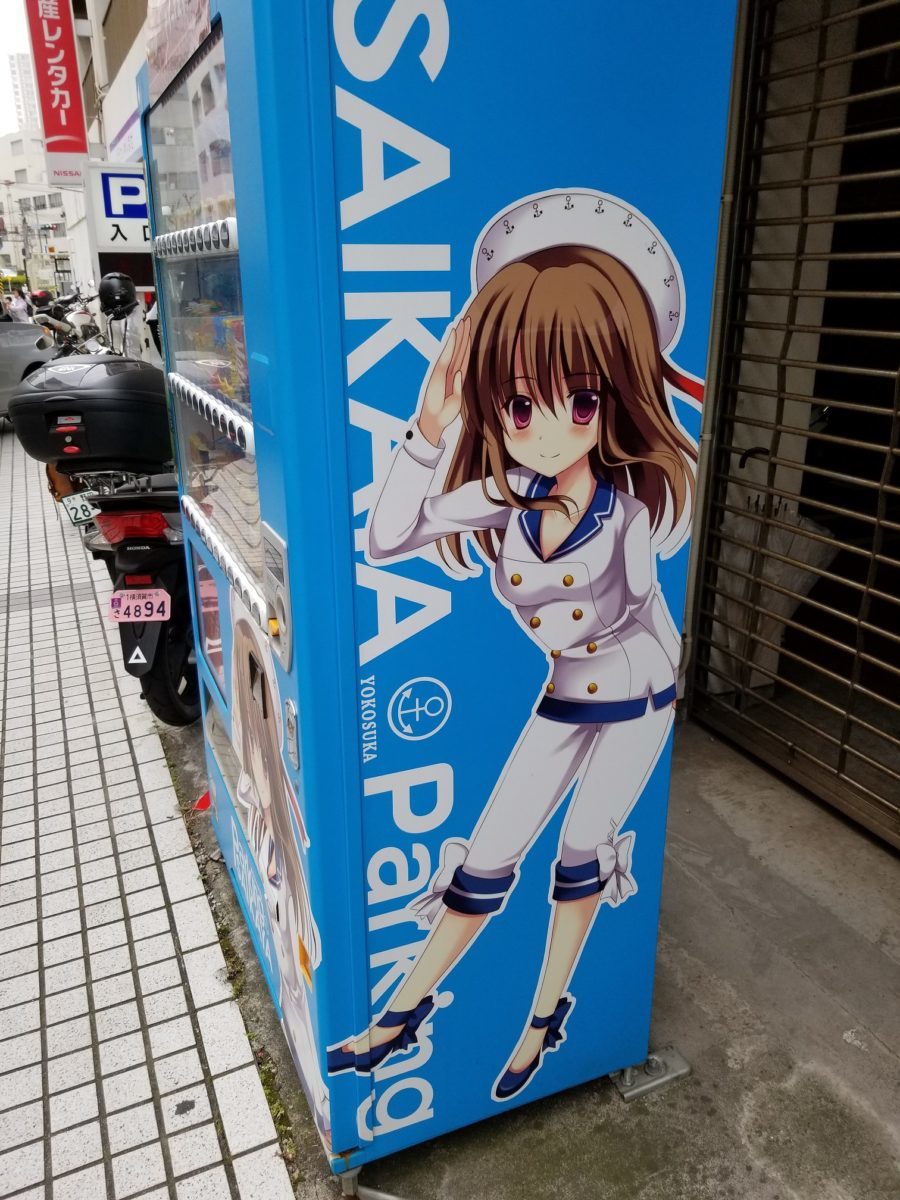On the edge of Greater Tokyo, down on the Miura Peninsula that guards the entrance to Tokyo Bay, lies the small city of Yokosuka, Kanagawa. This otherwise unremarkable bedroom community is well known in naval circles as the headquarters of the U.S. Navy’s Seventh Fleet, as the place where Commodore Matthew Perry’s “Black Ships” arrived to open Japan to the world, and as the final resting place of the world’s last pre-dreadnought battleship, Mikasa.
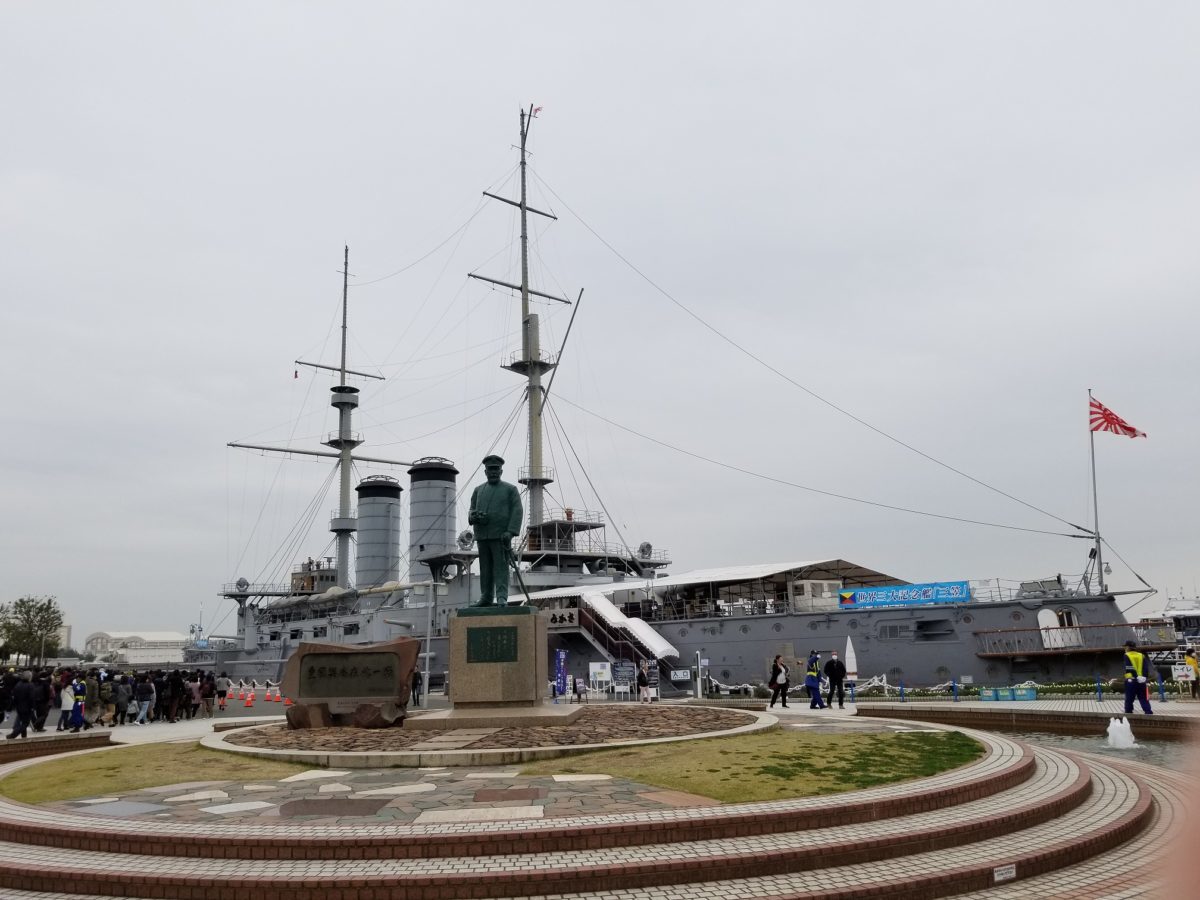
Mikasa is an important museum ship, providing an example of what battleships in her time were like, but also as the flagship of Admiral Tōgō Heihachirō fleet, with which he won the Russo-Japanese War and cemented Japan’s position as a world power on par with any European nation.
And you can have anime events on her. I paid my visit to Mikasa on March 30, and unfortunately had to leave Yokosuka on April 4, just a few days before Yostar and Wargaming took over the museum ship to host an Azur Lane and World of Warships collaboration event.
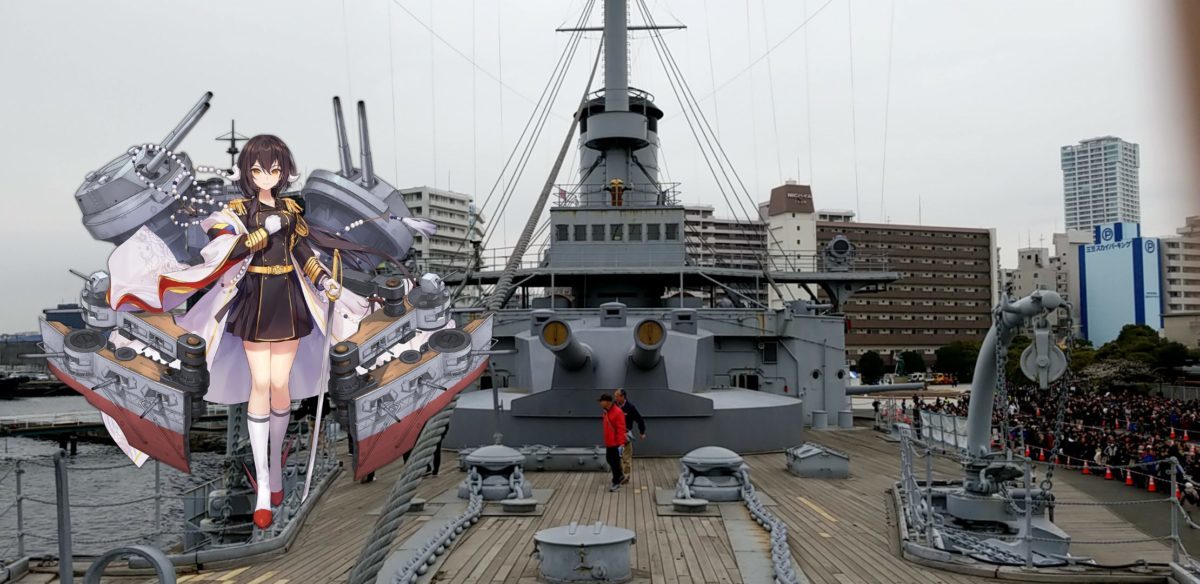
Mikasa appears as a playable ship in both games. Although, in the former, she takes the form of a hot anime babe, of course. In honor of her age relative to the other, WWII-era characters, they call her Mikasa-daisenpai and characterize her as something of an old lady, grandma-type.
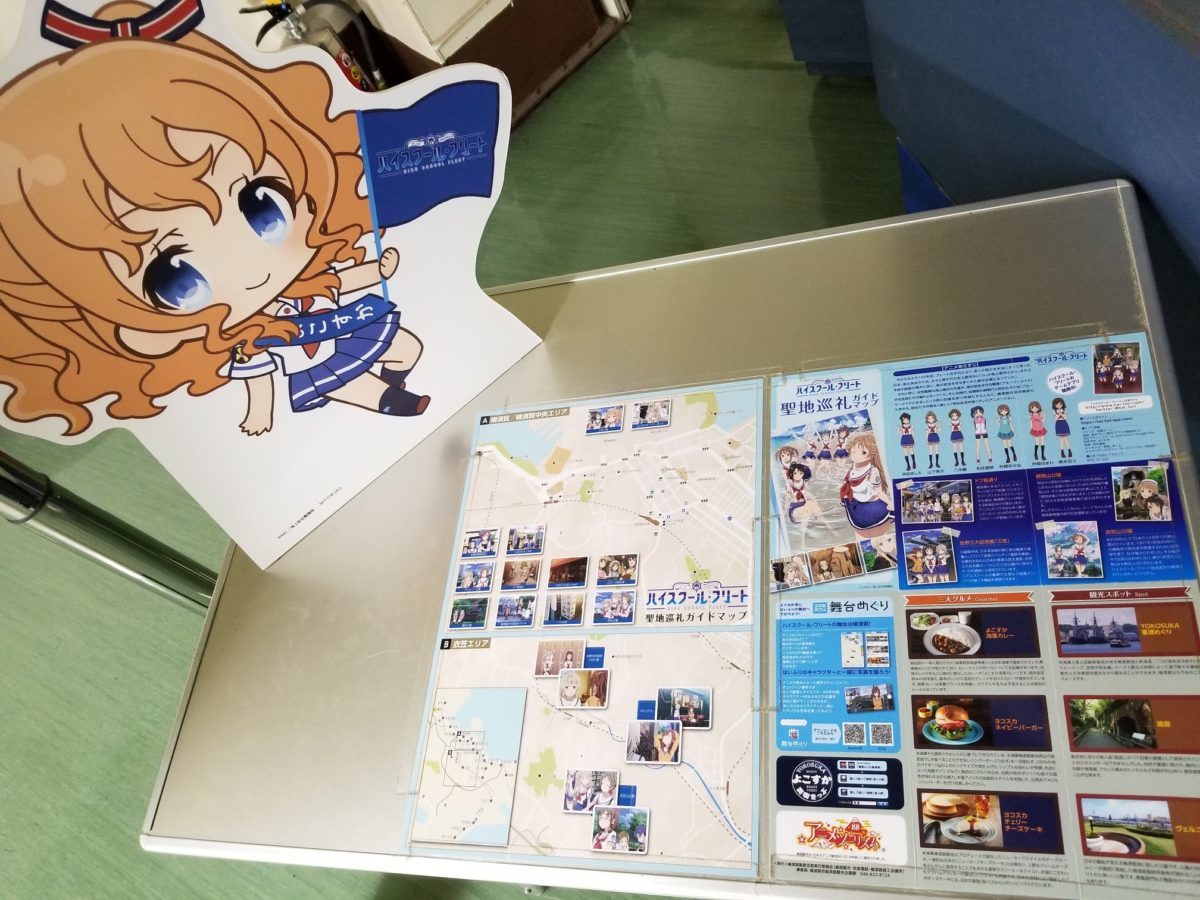
When I visited, they also had a display for a tour of the “sacred places” of High School Fleet. I’ve not seen the anime, but I understand it tells the story of high school girls training to be sailors and takes place in Yokosuka. I did not follow the map to any other sacred places.
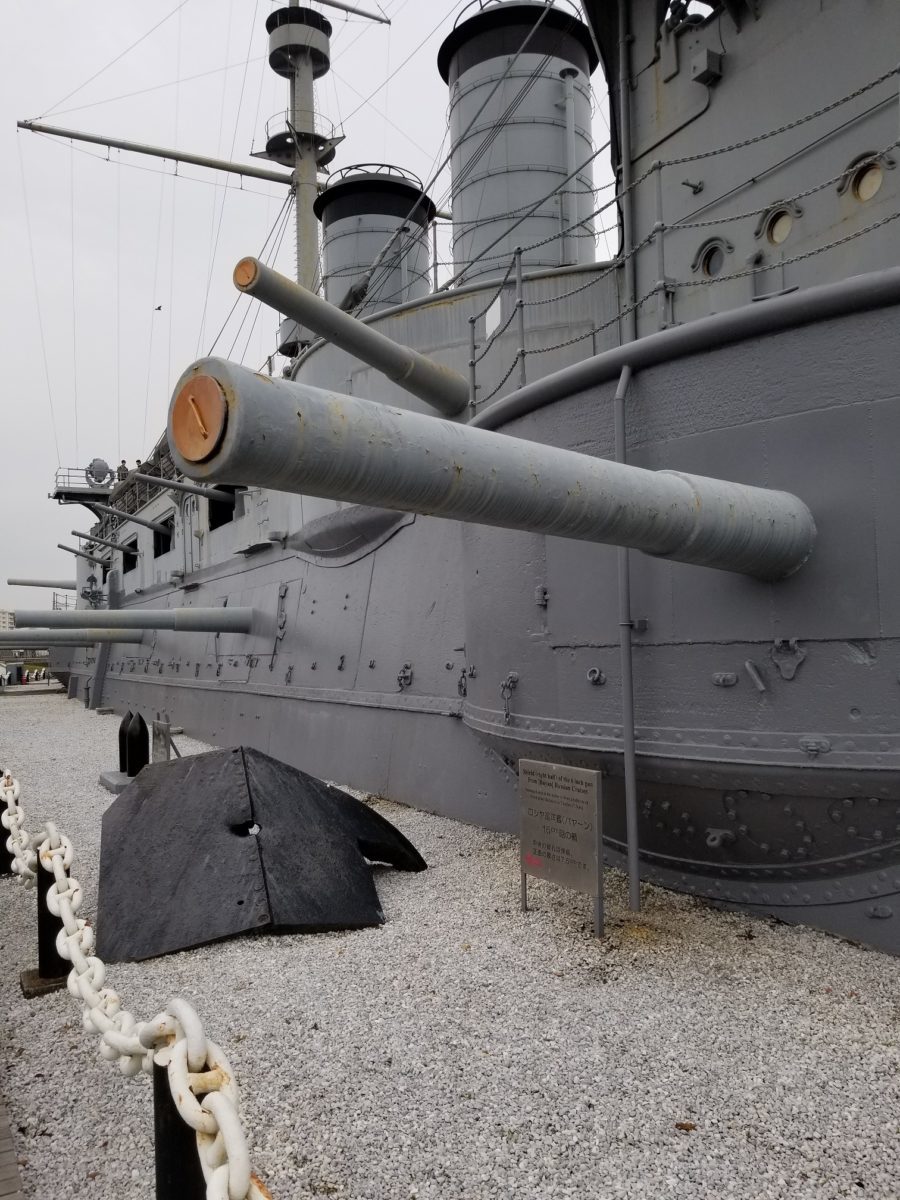
According to the Washington Naval Treaty of 1922 (that’s how long she’s been a memorial ship), Mikasa had to be encased in cement and isn’t allowed to sail. So, unlike other museum ships I’ve visited, she doesn’t actually float in the water at all.
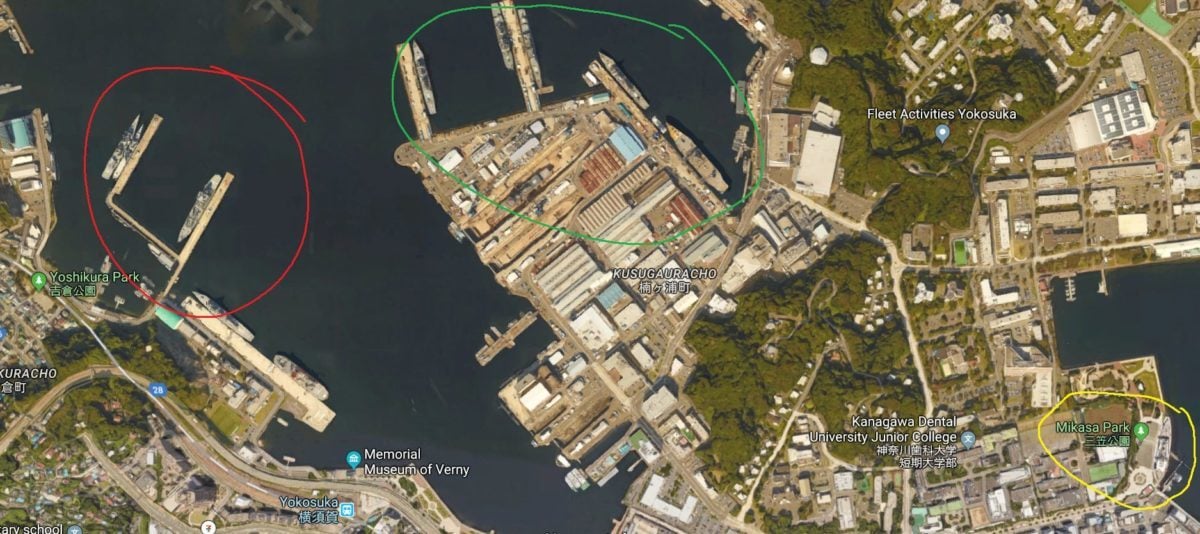
But she is just a stone’s throw from the active naval bases of both the U.S. Navy and the Japanese Maritime Self-Defense Force. So accustomed to visits from U.S. servicemen is she that the museum accepts U.S. dollars for its entry fee and, while I was visiting, a volunteer docent came up to speak to me in perfect American English. The retired JMSDF submarine captain was happy to tell me all about Mikasa and her history. I didn’t ask him about High School Fleet though.
It takes about an hour by train from Tokyo Station to Mikasa Park, but it’s worth the trip for anyone interested in naval history. The way Yokosuka is a town defined by the navy, whether by Japan’s own naval traditions in Mikasa and the JMSDF, or by the presence of dozens of American ships and thousands of foreign sailors, is interesting to see.
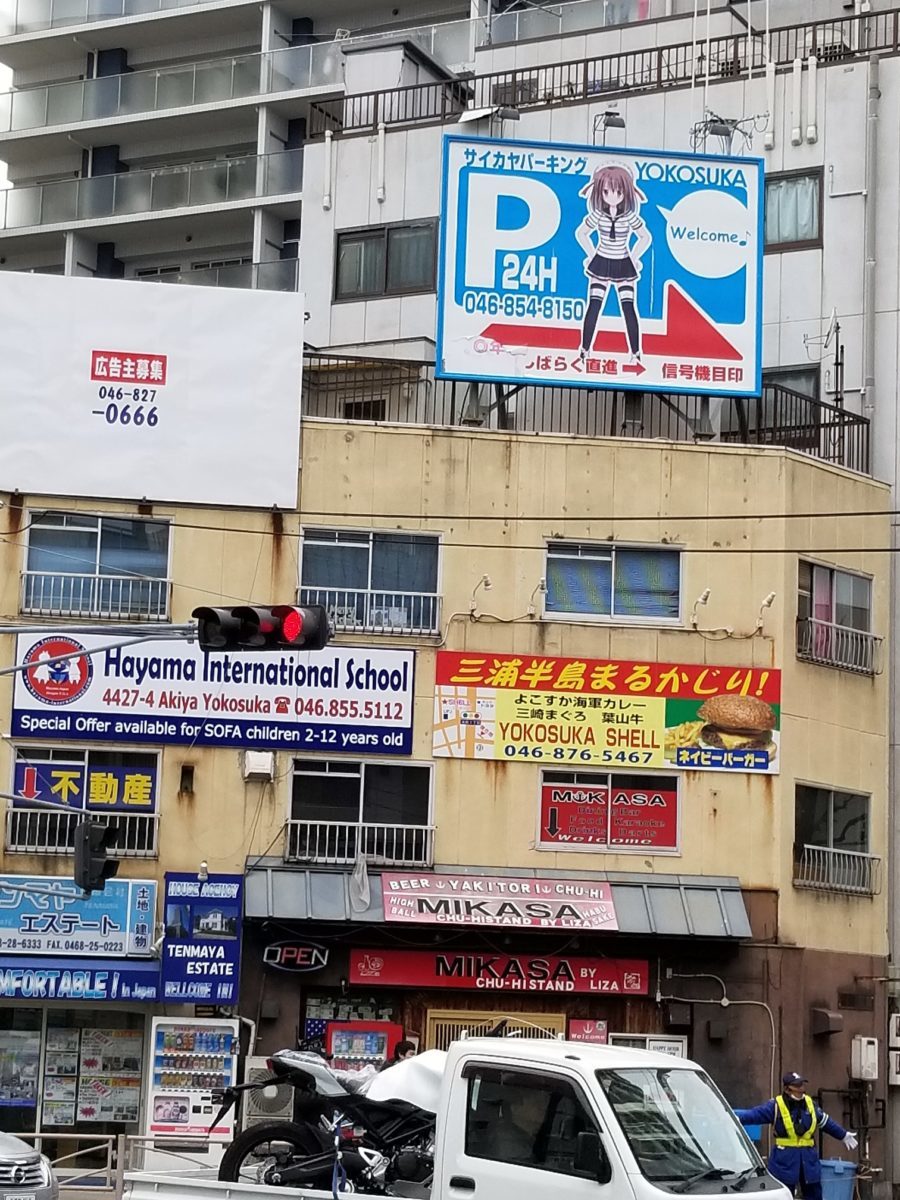
When you walk from Yokosuka-Chūō Station to Mikasa Park, you see signs, shops, and advertisements that all invoke Mikasa, and at the same time you see a Carl’s Jr., bars touting their chu-hi deals in English, and ads for services to SOFA (Status of Forces Agreement governing U.S. personnel in Japan) families.
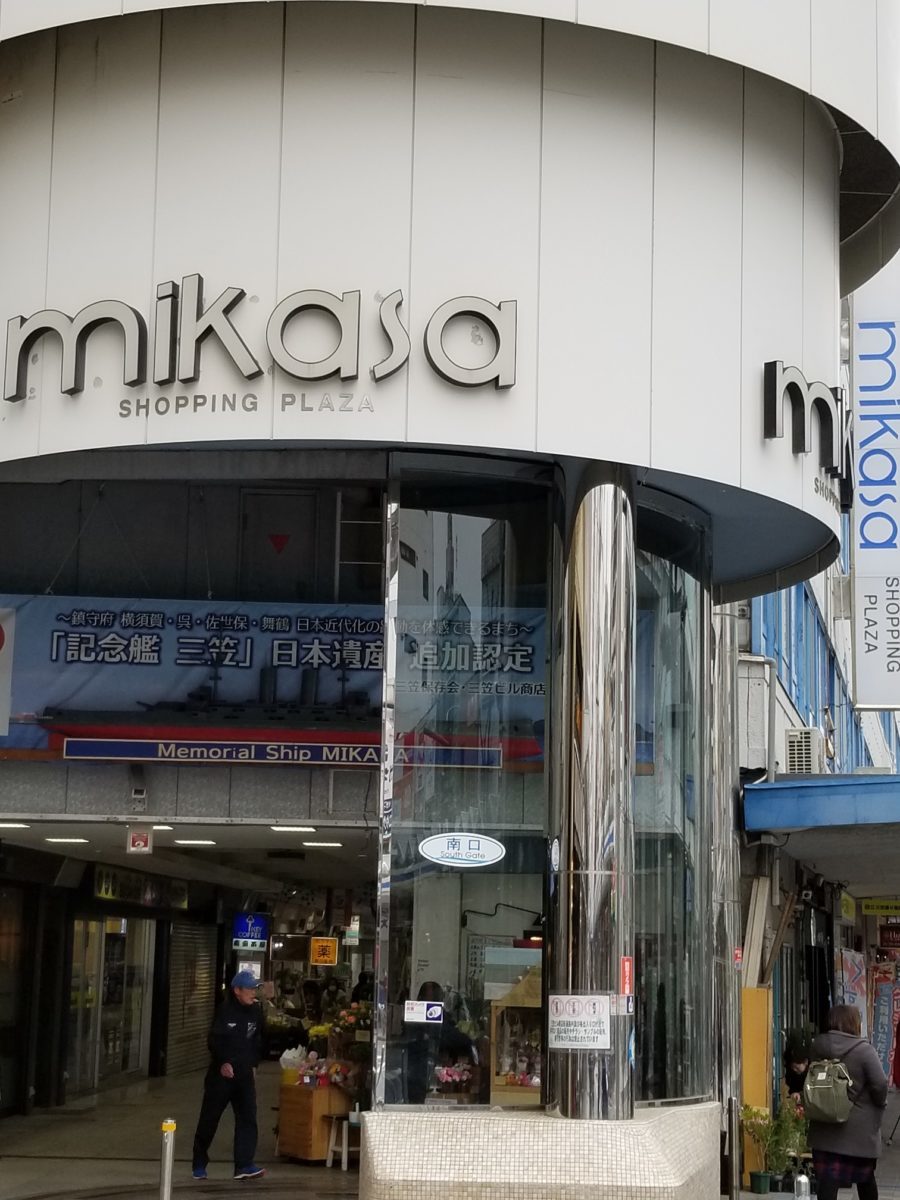
You also see cute anime girls in sailor suits, which is, of course, another important naval tradition.
